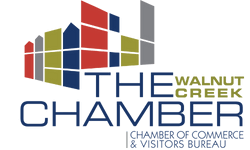When disaster strikes, whether from a fire or water-related incident, the aftermath can be overwhelming. Both fire and water damage can leave a lasting impact on your property, from structural issues to health hazards like mold. Conducting a thorough damage assessment is the first critical step toward restoration. However, knowing what to ask during this assessment is equally important to ensure that all aspects of the damage are addressed.
This comprehensive guide covers the most important questions to ask during a fire and water damage assessment, helping you navigate the recovery process with confidence.
Table of Contents
Toggle1. What Is the Extent of the Damage?
The first and most obvious question to ask during a fire and water damage assessment is about the extent of the damage. Understanding the full scope of the damage is crucial for planning the restoration process. This includes:
- Structural Damage: Ask about the condition of the walls, floors, ceilings, and foundation. Structural integrity is a major concern, especially after a fire, where the heat can weaken building materials.
- Surface Damage: Fire and water can cause extensive damage to surfaces like walls, floors, and ceilings. Ask about soot, stains, and warping.
- Hidden Damage: Water can seep into areas that are not immediately visible, such as behind walls, under floors, and in the insulation. Ask if there is any hidden water damage that needs to be addressed.
- Electrical and Plumbing Systems: Fire and water damage can severely affect the electrical wiring and plumbing systems. Ask about the condition of these systems and whether they need to be replaced or repaired.
- Content Damage: Inquire about the damage to personal belongings, furniture, and other items in the affected area. Understanding what can be salvaged and what must be discarded is important for insurance claims and recovery planning.
2. Is the Property Safe to Enter?
Safety is the top priority after a disaster. Before you or anyone else enters the damaged property, it’s essential to know whether it’s safe to do so. Ask the professionals conducting the assessment:
- Structural Stability: Is the building structurally sound, or are there areas that could collapse? This is particularly important after a fire, where the heat can weaken beams, walls, and roofs.
- Hazardous Materials: Are there any hazardous materials present, such as asbestos, lead paint, or chemicals that may have been released during the fire or by the water?
- Air Quality: Are there any air quality concerns, such as smoke, mold spores, or toxic fumes that could pose a health risk?
- Electrical Safety: Is the electrical system safe, or could there be a risk of electric shock or fire due to damaged wiring?
- Flooded Areas: If there is standing water, is it safe to enter these areas, or is there a risk of drowning, slipping, or exposure to contaminated water?
3. What Are the Primary Causes of Damage?
Understanding the root cause of the damage is essential for planning the restoration process and preventing future incidents. Ask the following:
- Fire Source: What caused the fire? Was it electrical, due to cooking, a candle, or something else? Knowing the source helps in understanding the spread of the fire and the type of damage caused.
- Water Source: Where did the water come from? Was it due to firefighting efforts, a burst pipe, flooding, or a roof leak? The source of water can affect the type of contamination present and the restoration methods needed.
- Secondary Damage: Were there any secondary effects that exacerbated the damage, such as high humidity leading to mold growth, or soot spreading to unaffected areas?
- Pre-Existing Issues: Were there any pre-existing conditions, such as old wiring or plumbing issues, that contributed to the severity of the damage?
4. What Are the Immediate Actions Needed to Prevent Further Damage?
In many cases, the initial damage is only part of the problem. Without prompt action, the situation can worsen, leading to more extensive and costly repairs. Ask about the immediate steps needed to prevent further damage:
- Securing the Property: Should doors, windows, or roofs be boarded up or tarped to prevent weather-related damage, vandalism, or theft?
- Water Extraction: Is there a need for immediate water removal to prevent further saturation and mold growth?
- Smoke and Soot Cleanup: Should soot be cleaned off surfaces immediately to prevent permanent staining and corrosion?
- Drying and Dehumidification: How soon should drying equipment be set up to prevent mold growth and structural damage?
- Mold Remediation: If mold is already present, what steps are necessary to prevent it from spreading?
5. What Is the Plan for Water and Smoke Remediation?
Fire and water damage often go hand in hand, and each requires specific remediation techniques. Understanding the remediation plan is crucial for ensuring a complete recovery:
- Water Remediation: What methods will be used to extract water and dry out the property? Will industrial fans, dehumidifiers, and water extractors be used? How long is this process expected to take?
- Smoke Remediation: How will smoke odor and soot be removed from the property? Will air scrubbers, ozone generators, or thermal fogging be used? What steps will be taken to clean and deodorize soft furnishings, carpets, and personal items?
- Mold Prevention: What measures will be taken to prevent mold growth during the remediation process? This could include the use of antimicrobial treatments, continuous monitoring of moisture levels, and thorough drying of all affected areas.
- Documentation and Monitoring: How will the remediation process be documented, and how will progress be monitored? Ask about the frequency of inspections and the criteria for determining when remediation is complete.
6. What Are the Potential Health Hazards?
Fire and water damage can create a host of health hazards, from mold and mildew to toxic fumes and asbestos exposure. It’s essential to understand the potential risks and how they will be addressed:
- Mold and Mildew: How likely is it that mold and mildew have developed? What types of mold might be present, and what are the associated health risks?
- Asbestos and Lead: If the building is older, could asbestos or lead paint have been disturbed? How will these hazards be managed during the restoration process?
- Air Quality Concerns: Are there any concerns about indoor air quality, such as lingering smoke odors, soot particles, or chemical residues? What steps will be taken to improve air quality?
- Water Contamination: If the water damage was caused by flooding, is there a risk of contamination from sewage, chemicals, or other hazardous materials? How will this be addressed?
7. What Items Can Be Salvaged?
One of the most distressing aspects of fire and water damage is the potential loss of personal belongings and valuables. Knowing what can be salvaged and how to do so can provide some relief:
- Furniture and Upholstery: Can any furniture be cleaned and restored, or will it need to be replaced? What cleaning methods will be used?
- Electronics and Appliances: Are any electronic devices or appliances salvageable, and what precautions should be taken before attempting to use them again?
- Clothing and Textiles: Can clothing, curtains, and other textiles be cleaned of smoke odors and stains? What cleaning methods are recommended?
- Documents and Photographs: How can important documents, photographs, and other paper items be preserved or restored? Will specialized services, such as freeze-drying or digitization, be needed?
- Sentimental Items: What steps can be taken to salvage sentimental items like heirlooms, jewelry, and artwork? Is there a specialist who can assist with the restoration of these items?
8. What Are the Costs Involved in the Restoration Process?
Understanding the financial implications of the restoration process is crucial for planning and insurance purposes. Ask about:
- Estimated Costs: What is the estimated cost of the entire restoration process, including remediation, repairs, and replacement of damaged items?
- Insurance Coverage: Will the costs be covered by insurance? What documentation will be needed for the insurance claim, and how should it be submitted?
- Out-of-Pocket Expenses: Are there any out-of-pocket expenses that you will need to cover, such as deductibles, upgrades, or items not covered by insurance?
- Payment Plans: Does the restoration company offer payment plans or financing options if the costs exceed your budget?
- Potential Additional Costs: Are there any potential additional costs that could arise during the restoration process, such as unforeseen structural repairs, mold remediation, or replacement of damaged systems?
9. What Is the Expected Timeline for Restoration?
Time is of the essence when it comes to fire and water damage restoration. Knowing the expected timeline helps you plan for temporary accommodations, manage your expectations, and coordinate with insurance companies and contractors:
- Initial Remediation: How long will it take to complete the initial remediation, such as water extraction, drying, and smoke cleanup?
- Structural Repairs: What is the timeline for any necessary structural repairs, including permits, inspections, and construction?
- Final Restoration: When can you expect the final restoration to be complete, including the replacement of damaged items, painting, and finishing touches?
- Delays and Contingencies: Are there any potential delays or contingencies that could extend the timeline, such as waiting for insurance approvals, material shortages, or unexpected findings during the restoration process?
10. What Are the Long-Term Implications of the Damage?
Even after the restoration process is complete, there may be long-term implications to consider. Understanding these potential issues helps you prepare for the future:
- Structural Integrity: Will the damage have any lasting effects on the structural integrity of the property? Are there any areas that will require ongoing monitoring or future repairs?
- Health Concerns: Are there any long-term health concerns that could arise from the damage, such as persistent mold issues, air quality problems, or lingering odors?
- Insurance Implications: How will the damage and restoration affect your insurance premiums or coverage in the future? Will you need to make any changes to your policy?
- Property Value: Will the damage and subsequent restoration impact the value of your property? How can you document the restoration work to ensure that it is reflected in the property’s value?
- Preventative Measures: What steps can you take to prevent future fire or water damage? This could include upgrading fire alarms, installing flood barriers, or making changes to your home’s layout or materials.
Conclusion
Navigating the aftermath of fire and water damage is a complex and often overwhelming process. By asking the right questions during the damage assessment, you can gain a clearer understanding of the situation and make informed decisions about the restoration process. From understanding the extent of the damage to planning for long-term implications, these questions provide a comprehensive framework for assessing and addressing fire and water damage in your property.
With the right information in hand, you can work effectively with restoration professionals, insurance companies, and contractors to restore your home or business to its pre-damage condition. Remember, the goal is not only to repair the visible damage but also to ensure the safety, health, and long-term value of your property.
Shield Your Home from Devastation with Garcia Plumbing and Home Restoration’s Fire and Water Damage Assessment!
Worried about the potential havoc fire or water can wreak on your home? You’re not alone. At Garcia Plumbing and Home Restoration, we know how overwhelming it can be to face the aftermath of fire or water damage. That’s why our dedicated team is here to provide thorough and reliable damage assessments that don’t just identify the problem—they pave the way for complete restoration and peace of mind.
Imagine the relief of knowing your home is in the hands of experts trusted throughout Contra Costa County. We don’t just assess the damage; we offer solutions that safeguard your home’s future. Our seasoned professionals bring years of experience, ensuring that every corner of your home is inspected and protected.
Don’t wait until it’s too late. Let Garcia Plumbing and Home Restoration be your first call in the face of disaster. Reach out today for a comprehensive fire and water damage assessment, and take the first step towards restoring your home—and your peace of mind!




